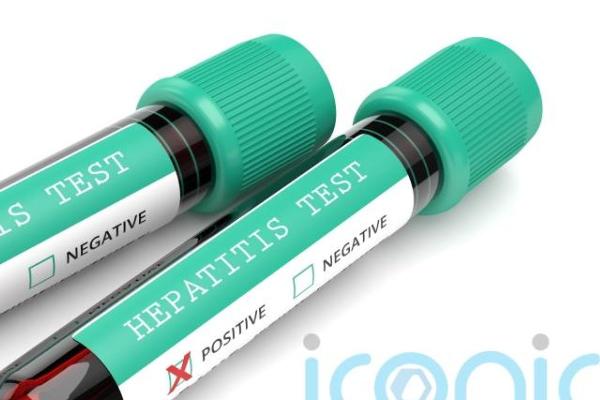Understanding Omicron Symptoms: What You Need to Know

Strong 8k brings an ultra-HD IPTV experience to your living room and your pocket.
Understanding Omicron Symptoms: What You Need to Know | Healthcare 360 Magazine
The Omicron variant of the coronavirus has brought new challenges and concerns to the global fight against COVID-19. First identified in South Africa in late 2021, Omicron has since spread worldwide, leading to a surge in infections and raising questions about its symptoms, severity, and impact on public health. In this article, we will delve into the specific Omicron symptoms, how they compare to previous strains, and what you can do to protect yourself and others.
What is the Omicron Variant Omicron symptoms?
Omicron, scientifically known as B.1.1.529, is a variant of the SARS-CoV-2 virus, which causes COVID-19. It has numerous mutations, particularly in the spike protein, which have made it more transmissible than previous variants. These mutations have also raised concerns about its potential to evade immunity from vaccines and past infections.
Common Omicron Symptoms
While many of the Omicron symptoms overlap with those of other COVID-19 strains, some differences have been noted. Commonly reported symptoms include:
Understanding Omicron Symptoms: What You Need to Know | Healthcare 360 Magazine
Sore Throat: One of the most frequently reported symptoms of Omicron is a sore throat. Unlike previous variants, where a sore throat was less common, Omicron appears to cause more upper respiratory tract symptoms.
Runny Nose and Congestion: Many individuals infected with Omicron experience nasal congestion and a runny nose. These symptoms are similar to those of a common cold, which can make it difficult to distinguish between the two without testing.
Cough: A persistent cough is another common symptom. It can range from mild to severe and is often accompanied by other respiratory symptoms.
Fatigue: Feeling unusually tired or fatigued is a hallmark of COVID-19, and Omicron is no exception. This fatigue can be significant, even in mild cases.
Headache: Headaches have been frequently reported among Omicron cases. They can vary in intensity and duration.
Muscle Aches: Muscle aches and pains, often described as similar to those experienced with the flu, are common with Omicron infections.
Fever: While fever is a classic COVID-19 symptom, it appears to be less common with Omicron compared to earlier variants. However, it can still occur, especially in more severe cases.
Sneezing: Unlike previous variants, sneezing seems to be more commonly associated with Omicron. This adds to the challenge of distinguishing it from other respiratory infections like the common cold or flu.
Less Common Omicron Symptoms
Understanding Omicron Symptoms: What You Need to Know | Healthcare 360 Magazine
In addition to the more common symptoms listed above, some individuals with Omicron have reported less common symptoms, such as:
Gastrointestinal Symptoms: Some people experience nausea, vomiting, or diarrhea.
Loss of Taste and Smell: While this was a prominent symptom in earlier variants, it appears to be less common with Omicron.
How Omicron Symptoms Compare to Previous Variants
One of the most notable differences between Omicron and previous variants, such as Delta, is the shift in symptom profile. While Delta often caused more severe lower respiratory symptoms, including shortness of breath and chest pain, Omicron seems to predominantly affect the upper respiratory tract. This difference might contribute to its perceived lower severity in many cases, although it is highly transmissible.
Severity of Omicron Infections
Early data suggest that Omicron infections may result in milder disease for many people, particularly those who are fully vaccinated and boosted. However, this does not mean Omicron is harmless. Due to its high transmissibility, even a smaller percentage of severe cases can lead to significant numbers of hospitalizations and put a strain on healthcare systems.
It’s important to note that individuals with underlying health conditions, older adults, and those who are unvaccinated are still at risk for severe disease from Omicron. Therefore, public health measures and vaccination remain crucial in mitigating its impact.
What to Do If You Have Omicron Symptoms
If you experience symptoms consistent with Omicron or any COVID-19 variant, it is important to take the following steps:
Get Tested: Testing is the only way to confirm a COVID-19 infection. Rapid antigen tests and PCR tests are both effective, but PCR tests are more sensitive and reliable.
Isolate: If you test positive, follow public health guidelines for isolation to prevent spreading the virus to others. This typically involves staying at home and avoiding contact with others for a specified period.
Inform Close Contacts: Notify anyone you have been in close contact with recently, so they can monitor for symptoms and get tested if necessary.
Seek Medical Attention if Needed: If you develop severe symptoms, such as difficulty breathing, chest pain, confusion, or persistent high fever, seek medical care immediately.
Preventing Omicron Infections
Preventing the spread of Omicron involves the same basic measures used to combat other COVID-19 variants:
Understanding Omicron Symptoms: What You Need to Know | Healthcare 360 Magazine
Vaccination: Vaccines remain the most effective tool in preventing severe illness, hospitalization, and death from COVID-19. Ensure you are fully vaccinated and receive booster doses as recommended.
Wear Masks: Wearing masks, especially in indoor or crowded settings, can reduce the risk of transmission. High-quality masks, such as N95 or KN95, offer better protection than cloth masks.
Practice Good Hygiene: Regular hand washing, using hand sanitizer, and avoiding touching your face can help reduce the risk of infection.
Maintain Social Distance: Keeping a safe distance from others, particularly in crowded or poorly ventilated areas, can help prevent the spread of the virus.
Stay Informed: Follow public health guidelines and stay informed about the latest recommendations from health authorities.
Conclusion
The Omicron variant has introduced new challenges in the ongoing battle against COVID-19. Understanding the Omicron symptoms and taking appropriate measures to protect yourself and others is crucial in mitigating its impact. While Omicron may cause milder illness for many, it is still a serious threat, particularly for vulnerable populations. By staying vigilant, getting vaccinated, and following public health guidelines, we can work together to reduce the spread of this highly transmissible variant and protect our communities.
Note: IndiBlogHub features both user-submitted and editorial content. We do not verify third-party contributions. Read our Disclaimer and Privacy Policyfor details.







